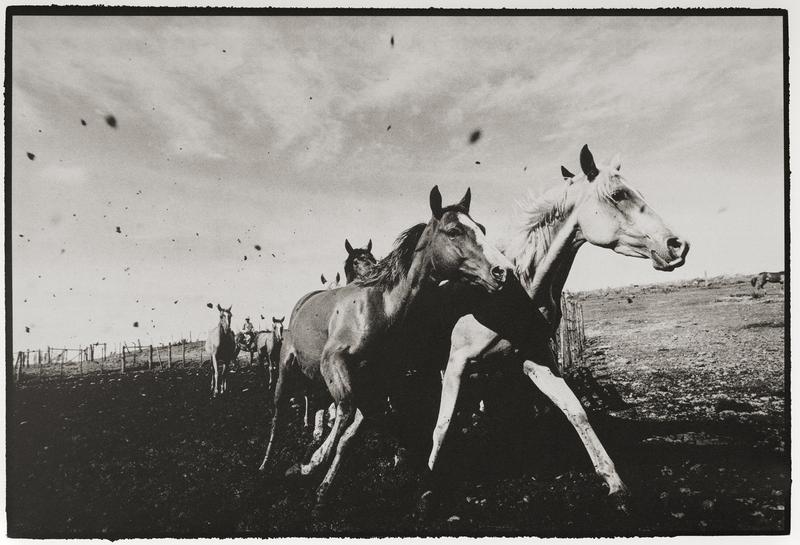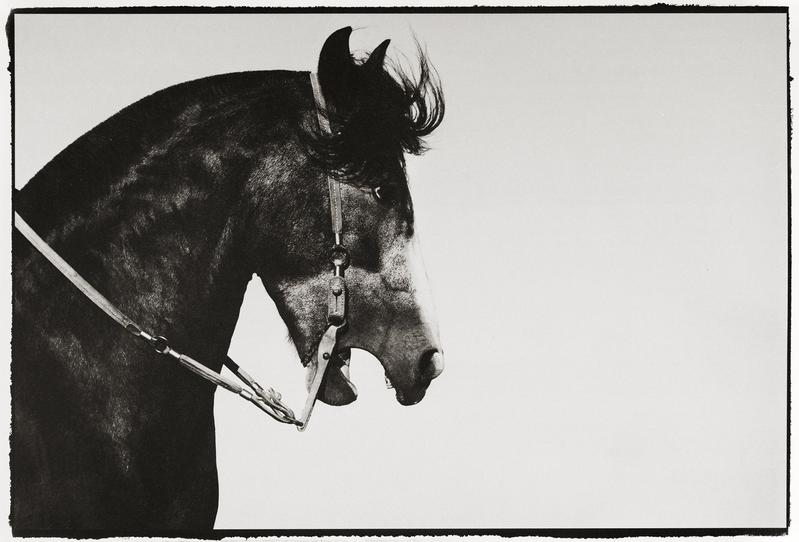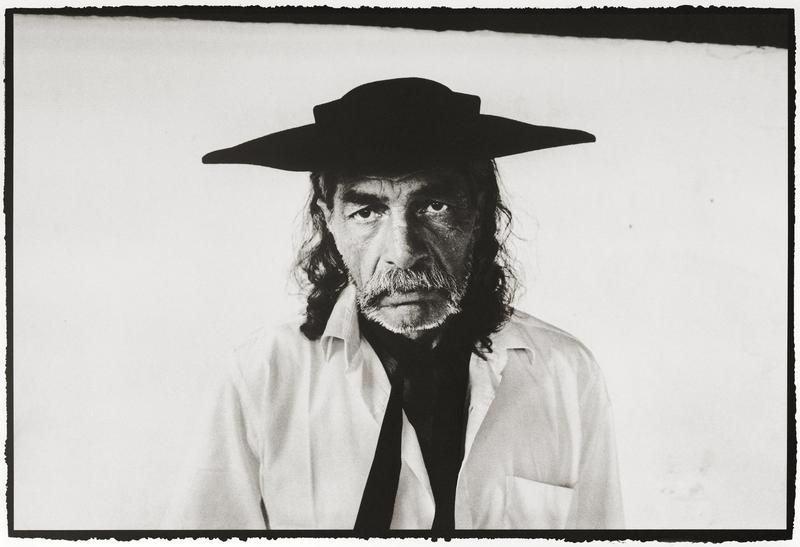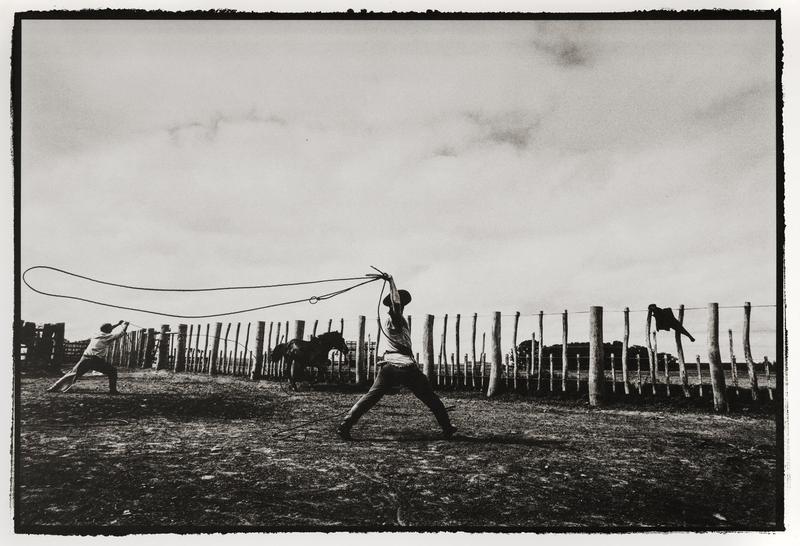Exhibition's images highlight a devotion to the land and a unique way of living, Lin Qi reports.
 Gauchos, a series of images created by Uruguayan photographer Luis Fabini, is on show in Beijing through May 8. These include Driving the Herd of Mares and Colts Toward the Ranch's Corrals. (PHOTO PROVIDED TO CHINA DAILY)
Gauchos, a series of images created by Uruguayan photographer Luis Fabini, is on show in Beijing through May 8. These include Driving the Herd of Mares and Colts Toward the Ranch's Corrals. (PHOTO PROVIDED TO CHINA DAILY)
Works of arts and crafts are hugely popular in bringing people living on different continents together. In 2018, an exhibition was held at the National Art Museum of China in Beijing to unfold the cultural richness of the Guarani people, one of the indigenous groups of South America.
In collaboration with the Museum of Pre-Columbian and Indigenous Art, in Montevideo, the capital of Uruguay, the exhibition was well-received among those who attended for vividly presenting Guarani's distinctive customs and lifestyle with a display of wood carvings, woolen objects and dyed pieces.
Now the two museums have mounted another exhibition in Beijing to celebrate Uruguay's ethnic diversity, showing photos depicting the life and spiritual world of the gauchos, a group of nomadic people known for their skills of keeping and herding horses and living a free, colorful life.
 Gauchos, a series of images created by Uruguayan photographer Luis Fabini, is on show in Beijing through May 8. These include Criollo Horse. (PHOTO PROVIDED TO CHINA DAILY)
Gauchos, a series of images created by Uruguayan photographer Luis Fabini, is on show in Beijing through May 8. These include Criollo Horse. (PHOTO PROVIDED TO CHINA DAILY)
Titled Gauchos, the exhibition running through May 8 gathers signature works from a series on gauchos created by Uruguayan photographer Luis Fabini.
Based in New York City, the self-taught artist, now 57, was exposed to culturally diverse experiences when growing up, dividing time in South America, Europe and the United States. Since 2000, he has been focusing on Uruguay's cultural heritage; he lived with the gauchos for months to capture the many dimensions of their life and to reveal their outlook on life.
Wu Weishan, director of the National Art Museum, says the exhibition takes viewers upon "a pictorial journey to the grassland in northern Uruguay, exploring the livelihood of gaucho herdsmen, by which the distance between people of the two countries is shortened".
 Gauchos, a series of images created by Uruguayan photographer Luis Fabini, is on show in Beijing through May 8. These include Toro Castillos, Rodeo Performance Judge. (PHOTO PROVIDED TO CHINA DAILY)
Gauchos, a series of images created by Uruguayan photographer Luis Fabini, is on show in Beijing through May 8. These include Toro Castillos, Rodeo Performance Judge. (PHOTO PROVIDED TO CHINA DAILY)
Fabini says it was during a meditation, at the end of a three-year intense practice of Zen Buddhism, that he came up with the idea of photographing gauchos. He took a camera, two fixed lenses and some film rolls, and hitchhiked to the north of Uruguay.
After traveling for months, Fabini came across a member of the group. "I found myself sitting in front of a gaucho by a campfire. I asked him, as we shared yerba mate (the tea-like beverage unique to South America), who the gaucho was. He replied that the gaucho was the piece of land under his feet.
"His words hit me deeply. It was an epiphany to me."
Fabini's photos investigate the intimate world of gauchos and horses, the animal of great importance as both a life companion and workmate, as well as their relationship with land.
 Gauchos, a series of images created by Uruguayan photographer Luis Fabini, is on show in Beijing through May 8. These include Roping Colts for Gelding. (PHOTO PROVIDED TO CHINA DAILY)
Gauchos, a series of images created by Uruguayan photographer Luis Fabini, is on show in Beijing through May 8. These include Roping Colts for Gelding. (PHOTO PROVIDED TO CHINA DAILY)
Fabini says land is for him that "very strong link" with what he is doing as a photographer.
"All my work is about land, just as the gaucho is the man who looks at the land from a horse, from a bit higher.
"It was not just a search outside, it was more a search within that I had. It was through gauchos that I found my voice."
In his snapshots, Fabini tries to convey something "that can't be tamed" and something "to be kept pure". He says, when he takes photos, he is not documenting anything, instead, he is living the moment and making his viewers feel present, as deeply as he can.
"Finding art in these people's daily life deserves that I, as a photographer, open a portal so that people from different realities can see what is going on there.
"I do not aim to tell a story, the story tells itself in the end."
Contact the writer at linqi@chinadaily.com.cn


